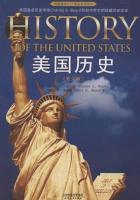
第4章 THE COLONIAL PERIOD(3)
During the years between 1629and 1640,Queen Elizabeththe period of arbitrary Stuart government,about twenty thousand Puritans emigrated to America,settling in the colonies of the far North.Although minor additions were made from time to time,the greater portion of the New England people sprang from this original stock.Virginia,too,for a long time drew nearly all her immigrants from England alone.Not until the eve of the Revolution did other nationalities,mainly the Scotch-Irish and Germans,rival the English in numbers.
The populations of later English colonies-the Carolinas,New York,Pennsylvania,and Georgia-while receiving a steady stream of immigration from England,were constantly augmented by wanderers from the older settlements.New York was invaded by Puritans from New England in such numbers as to cause the Anglican clergymen there to lament that "free thinking spreads almost as fast as the Church."North Carolina was first settled toward the northern border by immigrants from Virginia.Some of the North Carolinians,particularly the Quakers,came all the way from New England,tarrying in Virginia only long enough to learn how little they were wanted in that Anglican colony.
The Scotch-Irish.-Next to the English in numbers and influence were the Scotch-Irish,Presbyterians in belief,English in tongue.Both religious and eco-nomic reasons sent them across the sea.Their Scotch ancestors,in the days ofCromwell,had settled in the north of Ireland whence the native Irish had been driven by the conqueror's sword.There the Scotch nourished for many years enjoying in peace their own form of religion and growing prosper-ous in the manufacture of fine linen and woolen cloth.Then the blow fell.Toward the end of the seventeenth century their religious worship was put under the ban and the export of their cloth was forbidden by the Eng-lish Parliament.Within two decades twenty thousand Scotch-Irish left Ul-ster alone,for America;and all during the eighteenth century the migration continued to be heavy.Although no exact record was kept,it is reckonedSettlements of German and Scotch Irish Immigrantsthat the Scotch-Irish and the Scotchwho came directly from Scotland,composed one-sixth of the entire American population on the eve of the Revolution.
These newcomers in America made their homes chiefly in New Jersey,Pennsylvania,Maryland,Virginia,and the Carolinas.Coming late upon the scene,they found much of the land immediately upon the seaboard already taken up.For this reason most of them became frontier people settling the interior and upland regions.There they cleared the land,laid out their small farms,and worked as "sturdy yeomen on the soil,"hardy,industrious,and independent in spirit,sharing neither the luxuries of the rich planters nor the easy life of the leisurely merchants.To their agriculture they added woolen and linen manufactures,which,flourishing in the supple fingers of their tireless women,made heavy inroads upon the trade of the English merchants in the colonies.Of their labors a poet has sung:
"O,willing hands to toil;Strong natures tuned to the harvest-song and bound to the kindly soil;Bold pioneers for the wilderness,defenders in the field."
The Germans.-Third among the colonists in order of numerical importance were the Germans.From the very beginning,they appeared in colonial records.A number of the artisans and carpenters in the first Jamestown colony were of German descent.Peter Minuit,the famous governor of New Motherland,was a German from Wesel on the Rhine,and Jacob Leisler,leader of a popular up-rising against the provincial administration of New York,was a German from Frankfort-on-Main.The wholesale migration of Germans began with the found-ing of Pennsylvania.Penn was diligent in searching for thrifty farmers to cultivate his lands and he made a special effort to attract peasants from the Rhine country.A great association,known as the Frankfort Company,bought more than twenty thousand acres from him and in 1684established a center at Germantown for the distribution of German immigrants.In old New York,Rhinebeck-on-the-Hudson became a similar center for distribution.All the way from Maine to Georgia in-ducements were offered to the German farmers and in nearly every colony were to be found,in time,German settlements.In fact the migration became so large that German princes were frightened at the loss of so many subjects and England was alarmed by the influx of foreigners into her overseas dominions.Yet nothing could stop the movement.By the end of the colonial period,the number of Ger-mans had risen to more than two hundred thousand.
The majority of them were Protestants from the Rhine region,and South Germany.Wars,religious controversies,oppression,and poverty drove them forth to America.Though most of them were farmers,there were also amongthem skilled artisans who contributed to the rapid growth of industries in Pennsylvania.Their iron,glass,paper,and woolen mills,dotted here and there among the thickly settled regions,added to the wealth and independence of the province.
Unlike the Scotch-Irish,the Germans did not speak the language of the original colonists or mingle freely with them.They kept to themselves,builttheir own schools,founded their own newspapers,and published their own books.Their clannish habits often irritated their neighbors and led to occasional agitations against "foreigners."However,no serious collisions seem to have occurred;and in the days of the Revolution,GermanA Glimpse of Old Germantownsoldiers from Pennsylvania
fought in the patriot armies side by side with soldiers from the English and Scotch-Irish sections.